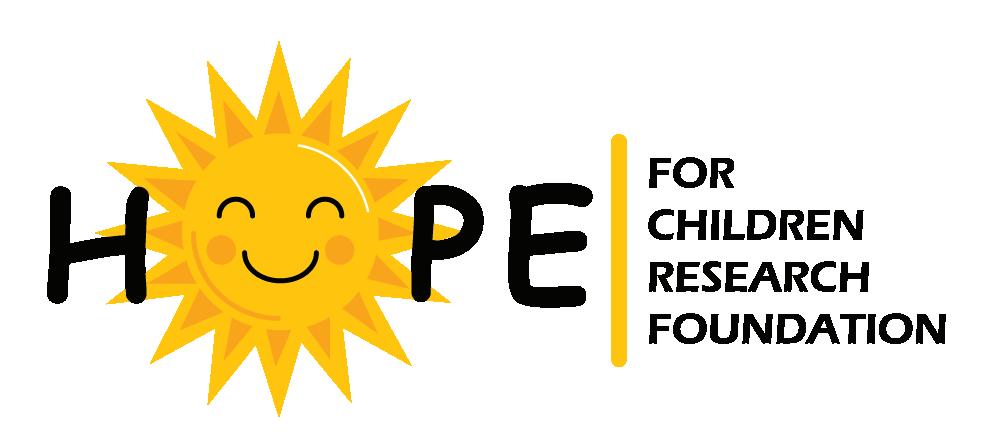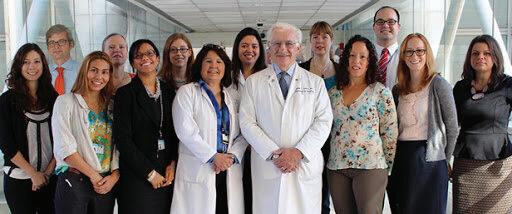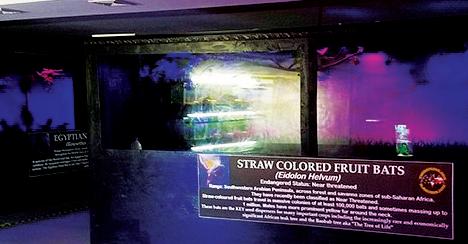
11 minute read
nonprofit spotlight
� Nonprofit Spotlight� Hope For Children Provides A Spark of Hope To Families Facing Dark Times
By Kimberly Redmond
For the past three said Meg, adding that their mission decades, a Ramsey- stands on the belief that “we can cure based non-profit illnesses or make a significant difference organization has in the quality of lives.” been doing whatever it can to give a “It’s about finding a spark of hope,” tiny spark of hope to families facing she said. “Families need to live in a spirit dark times. of hope.”
That small sliver of optimism is born Pictured: Colleen Giblin For Paul and Vicki Giblin, their feeling from an unlikely place, a research labora- of hopelessness during the final stages tory at Columbia University Irving Medical of Colleen’s battle with cancer motivated Center. There, researchers work tirelessly to find them to work to spare other families similar anguish. better treatments and cures for a wide range of With that goal in mind, and with support from neurological and cancer-related conditions effect- family, friends, businesses and corporations, including children. ing the 1986 Super Bowl Championship New York
Much of the activity at the Colleen Giblin Giants, they launched the Colleen Giblin FoundaResearch Laboratories is funded by the Hope for tion, the first non-profit in the U.S. dedicated solely Children Foundation, a non-profit launched by the to funding pediatric research at a major academic late Paul and Vicki Giblin in 1986 after their four- medical center. year-old daughter, Colleen, died from an inoper- The money raised helped establish a laboratory able brain tumor. in Colleen’s name at Columbia University Irving
Meg Minassian, the organization’s longtime Medical Center, one of the nation’s leading research executive director, said, “We’re all about research, hospitals, led by her doctor, Dr. Darryl De Vivo. but that can be a tough sell.” Since its founding, over 6,000 donors and vol-
“Many people want to give a child’s dying wish unteers have supported the Hope for Children to go to Disney World,” she said. “We’re the Foundation, helping it to raise and donate over $7 opposite; we want to let those kids go on many million for pediatric neurological research. Just a vacations in their lifetime.” few of the foundation’s noteworthy local supporters
“Our goal is to make cures become realities,” include the late author Mary Higgins Clark, enter-


tainer Joe Piscopo, politician William “Pat” Schuber, developer Joseph Sanzari and former NFL stars Harry Carson, Lawrence Taylor and Bruce Harper.
And while there are now many non-profits, grassroots fundraisers and online campaigns aimed at helping kids facing serious medical conditions, the Hope for Children Foundation sets itself apart from the pack.
Funding a laboratory, Meg said, is admittedly less glamorous than covering the cost of a dream vacation, but, she said, “Research can take you places you never dreamed of.”
At the Colleen Giblin Research Laboratories, the team has studied dozens of disorders, including brain cancer, spinal disorders, neuro-metabolic diseases, spinal muscular atrophy, nerve and brain damage, mitochondrial diseases, genetic disorders, AIDS-related complications in children, fetal exposure to chemical substances and neurological illnesses that present on the autism spectrum.
The lab’s two biggest research breakthroughs involve the GLUT1 deficiency syndrome and spinal muscular atrophy (SMA).
“In 1992, the Giblin Labs first identified GLUT1 with only 100 known cases worldwide. Today approximately 360,000 children have the disease. Through clinical studies and trials, Dr. De Vivo and his team of researchers have found treatments that are more effective and are currently working on a cure which includes gene therapy and is proving to be the hope for children with GLUT1,” Meg said.
Research into SMA – the number one genetic cause of death in infancy – has seen pivotal clinical trials that have resulted in FDA approval of the first effective treatment in 1991. Continued research at the lab and further clinical trials led to two addition-


Pictured: One of the nation’s leading research hospitals’ laboratory team, led by Dr. Darryl De Vivo (pictured in the front row, fifth from the left) at Columbia University Irving Medical Center. al treatments approved by the FDA, an oral agent and gene therapeutic.
“All the research that we do is non-proprietary and all the discoveries we have made, we share with the world,” Meg said. “We’re not out there to make money on discoveries. Our mission is to find better treatments and ultimately cures for a host of neurological diseases.”
Meg, whose son, Danny, suffered a debilitating stroke when he was 20 months old that left him with a severe seizure disorder, knows all too well about the importance of hope and need for medical research.
Meg and her husband, Don, were told that Danny would be confined to a wheelchair and would never live a full life.
At age eight, he underwent a life-saving 14-hour brain operation at Columbia University Irving Medical Center, a procedure that helped limit his seizures. Danny, now 33, went on to graduate from school, is working and thriving, something that wouldn’t have been possible without the breakthrough research done by Dr. De Vivo and his research team. Danny, who is considered to be the organization’s “Poster Man,” is just one of several success stories that they know about, Meg said. “His work saved my son’s life, has given a better quality of life to Danny and our whole family and to so many other children and their families,” she said. While locally based, the nonprofit’s reach goes much, much further than Bergen County, Meg believes. “Research doesn’t have to immediately affect someone you know,” Meg said. “It may affect someone across the world – it’s very broad-based.” Meg, along with her husband, Donald, have been involved with the organization as volunteers since 1989 because the Mahwah couple believed so deeply in its mission. Six years later, she was named executive director and is the non-profit’s only paid employee. “We try to limit overhead so donations can go to research,” she said. “We rely on family, friends, volunteers and board members.” Like most every non-profit, the Hope for Children Foundation has faced fundraising challenges over the past year due to the COVID-19 pandemic. It has cancelled all in-person events, as well as held off on scheduling future fundraisers for now. “We’ve endured tough times over the years, especially over the last year, but we have a great group of steadfast supporters,” she said. In February 2020 – just before the onset of the coronavirus outbreak, the foundation held its signature annual fundraiser event, which Meg said, “helped sustain us throughout the year and meet the needs of the lab.” As the calendar turned to 2021, the non-profit reached out to its base of donors and received “a great response,” Meg said. Going forward, the Hope for Children Foundation is looking into a few other avenues of fundraising, including hosting a virtual action, she said. “The reality is, despite what’s happening in the world, research needs to continue,” Meg said. “Children’s diseases aren’t put on hold.” For more information on The Hope For Children Foundation, visit https://www.hopeforchildrenresearch.org.■
By Kevin CzerwinsKi
To The Bat Cave!
JOE D’ANGELI IS A MODERN DAY
BaT Man
Joe D’Angeli worried for the obvious reasons when the COVID-19 outbreak reached the United States in the late winter of 2020. It was the not so obvious reason, however, that had the Hasbrouck Heights resident most concerned.
D’Angeli, 54, owns and operates The Wildlife Conservation and Education Center in Garfield. While that may not seem like it should be of concern from a COVID-19 standpoint, the center’s nickname – The Bat Cave – did cause some worry.
“My first thought was game over,” D’Angeli said. “When COVID-19 hit, the second word in every story was bats. Obviously things have changed, though. People have become more educated and I think they want to know more about bats now.”

And, if you want to know about bats, what better place to visit than The Bat Cave? D’Angeli has been working with and studying bats for much of his life, the last four years of which have been spent at the Garfield location. While the Center has close to 100 animals of all shapes, sizes and origins, nearly half of them are bats as they represent D’Angeli’s first love.

Pictured: Joe D’Angeli’s Wildlife Conservation and Education Center, located in Garfield.
D’Angeli’s interest in bats dates back to his childhood. He was a big Batman fan as a youngster and that only fueled his interest in these winged creatures.
“My dad was a nightclub/bar owner and I’d go to work with him sometimes,” said D’Angeli, who graduated from New Milford High School. “I must have been about 10 years old one time I went with him and I was standing outside one night and there was this weird creature circling around one of the street lights. My father pointed out that it was a bat chasing the mosquitos that were drawn to the light.
“I thought they were mysterious. They were like birds but they were different. Then when I found out they were mammals, I was intrigued. They are the only true flying mammals. And, of course, I am a Batman freak to begin with so it all tied in.”
D’Angeli, who has also worked at the Van Saun Zoo in Paramus as a zookeeper, took animal behavior classes at New Milford High School but never went to college. Rather, he learned about bats on his own, devouring all the information he could while seeking out experts on the topic. He spoke to and worked with numerous people in the field while spending countless hours in the Bronx Zoo’s World of Darkness.
He read books, listened to lecturers and when he began to stump the experts with his questions and knowledge on bats, D’Angeli decided it was time to go out on his own. Now, he speaks at universities and museums and has a working knowledge of bats that is unequaled in the animal behavior world.
D’Angeli’s original setup was in his Little Ferry home. He housed bats and studied them, obtaining USDA and State licenses to keep the animals in his home. His house burned down in 2005, though, killing all the animals and nearly costing him his life. However, it was through donations that he was able to rebuild, setting up shop in a Ridgefield Park facility that wasn’t his home. He spent eight years there before moving to Garfield.
“Due to the kindness of others, I was able to rebuild,” D’Angeli said. “Many people, including the Chiller Theater Convention [a horror fan group], helped. I used to go there [the convention] with the bats. The owner held a fundraiser and raised $6,000 for me and my family. We found a new location because I didn’t feel like it was right doing it in my home any more.
“So we decided to get a location and start from the ground up. There were a few generous and gracious zoos from across the United States that donated bats and that was the beginning of a new chapter. Now, you can see all these beautiful animals.”
While the pandemic has been
(Continues on page 20)

crushing at times for non-profits such as D’Angeli’s, he has had some good things happen over the course of the last year. He received his tax-exempt non-profit status, which means that he is now available to apply for grants and donations. D’Angeli has already raised some funds through donations and a few small grants. He is also thinking about hiring a grant writer to help because he is “so busy caring for all the creatures.”
Those creatures are housed in D’Angeli’s 3,250 square-foot facility in Garfield. He is also working on adding an additional 3,000 square feet of working space on the building’s lower level. In addition to the bats and their offspring, D’Angeli has scores of other animals including his latest arrivals, two sloths – he says he is in love with the new female sloth Willow – and a wallaby, whose name is Penelope.
While business hasn’t been booming, it has been steady over the last year. D’Angeli adheres to all the state guidelines and remains a popular spot on the weekends for families looking for something to do.
“The one benefit we have over major metropolitan zoos is that during this weather we can be open because we are completely indoors,” he said. “We’re still at a reduced capacity because of the pandemic, though. We’re normally open from 12-8 p.m. on Friday, Saturday and Sunday but we’ve been so busy I’ve been thinking about going back to being open on Thursdays.
“We sell tickets for every two hours and only sell to a quarter capacity. That’s about 24-25 tickets in two-hour increments. The past five weekends we’ve probably had close to 100 people through the door on any given day. We’re good at disinfecting everything. We take temperatures and insist on masks and safe distancing because we’re not only concerned with visitors but our staff and animal ambassadors as well.”
So if you want to meet some flying foxes and Egyptian fruit bats, head on over to Garfield and visit D’Angeli. He and his animals are always looking for some company.■






